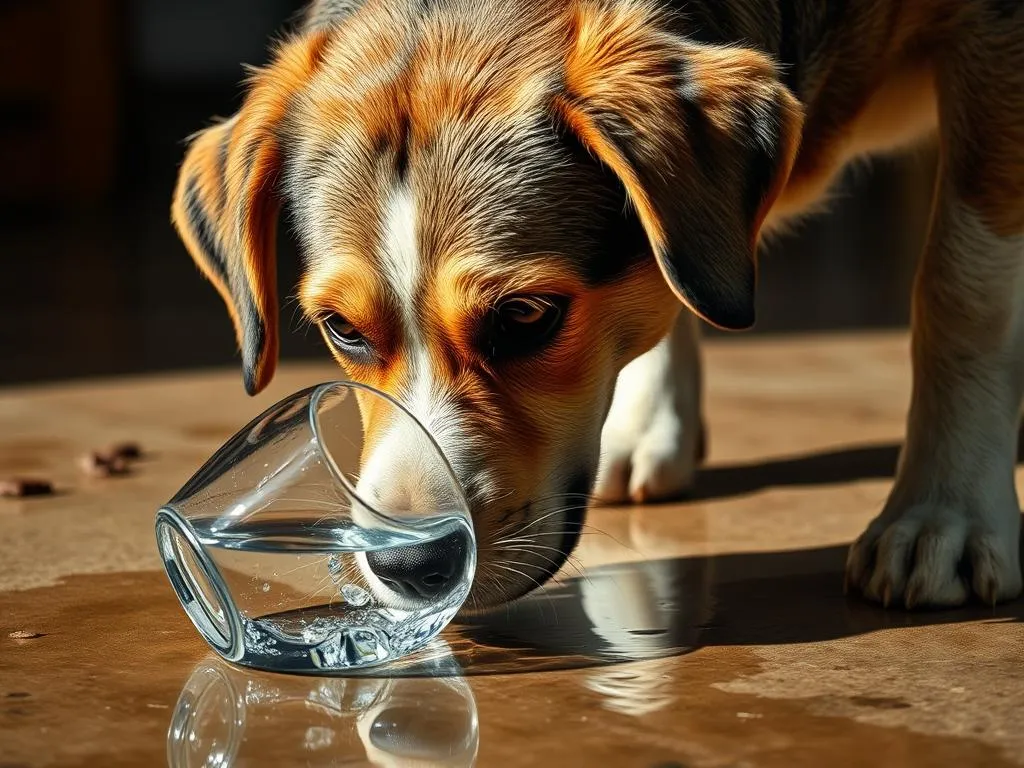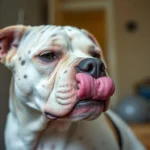
Maintaining proper hydration is crucial for the overall health and well-being of dogs. Water plays a vital role in regulating body temperature, aiding digestion, and facilitating various bodily functions. However, if you notice your dog drinking an excessive amount of water, it can raise concerns. Understanding why is my dog drinking a lot of water is essential to ensure your furry friend remains healthy.
Understanding Normal Dog Hydration Needs
Normal Water Intake for Dogs
Dogs typically require about one ounce of water per pound of body weight daily. This means a 20-pound dog should drink approximately 20 ounces of water each day. However, several factors can influence these needs:
- Activity Level: Active dogs may require more water, especially after vigorous exercise.
- Diet: Dogs on a dry kibble diet may drink more water than those on a wet food diet.
- Weather: Hot and humid conditions can increase a dog’s thirst.
Signs of Dehydration
Recognizing the signs of dehydration is critical. Symptoms include:
- Dry gums
- Lethargy
- Loss of appetite
- Sunken eyes
- Excessive panting
Ensuring your dog stays well-hydrated helps prevent these issues and promotes overall health.
Common Reasons for Increased Water Intake
Physiological Causes
Increased water consumption can sometimes be a natural variation. Dogs, like humans, experience fluctuations in thirst due to various factors, including age. Older dogs may drink more water due to age-related changes in metabolism and kidney function.
Dietary Factors
The type of food your dog consumes significantly impacts their hydration needs. For instance:
- Dry Food: Dogs on a dry food diet typically require more water than those eating wet food, as dry kibble has a lower moisture content.
- Salt and Protein: Diets high in salt or protein can lead to increased thirst. If your dog’s diet is rich in these ingredients, they may drink more water to balance their intake.
Health Conditions
Several medical conditions can lead to excessive thirst, known as polydipsia. Here are some common health issues associated with increased water intake:
- Diabetes Mellitus: This condition results in high blood sugar levels, leading to increased thirst and urination.
- Kidney Disease: Dogs with compromised kidney function may drink more water as their bodies attempt to compensate for their inability to concentrate urine.
- Cushing’s Disease (Hyperadrenocorticism): This hormonal disorder can increase thirst and urination due to excess cortisol production.
- Liver Disease: Liver dysfunction can lead to changes in thirst levels and overall hydration needs.
- Urinary Tract Infections (UTIs): Infections in the urinary tract can cause increased thirst, along with other symptoms such as frequent urination and discomfort.
Recognizing symptoms associated with these conditions is crucial to ensuring timely veterinary care.
When to Be Concerned
Identifying Excessive Thirst
Polydipsia is defined as excessive drinking, which is typically characterized by a significant increase in water intake compared to your dog’s normal habits. If you notice your dog drinking more than usual—more than a few ounces above the average for their size—it’s essential to monitor them closely.
When to Consult a Veterinarian
Certain signs warrant immediate veterinary attention, including:
- Sudden changes in drinking habits
- Increased urination
- Lethargy or weakness
- Vomiting or diarrhea
Early diagnosis and treatment are vital for managing any underlying health issues that could be causing increased thirst.
Diagnostic Procedures
Veterinary Assessment
If you suspect your dog is drinking too much water, a visit to the veterinarian is necessary. During the assessment, the vet will:
- Take a complete health history
- Perform a physical exam
Understanding Test Results
Common diagnostic tests may include blood tests, urinalysis, and imaging studies. Understanding these results is crucial for determining the underlying cause of increased thirst. For example, high glucose levels may indicate diabetes, while abnormal kidney values could suggest kidney disease. Follow-up tests may also be necessary to monitor your dog’s condition and response to treatment.
Treatment Options
Managing Underlying Conditions
Treatment for excessive thirst often focuses on addressing the underlying health issues. For instance:
- Diabetes Mellitus: Management may include insulin therapy and dietary adjustments.
- Kidney Disease: Treatment could involve fluid therapy, dietary changes, and medications.
- Cushing’s Disease: This may require medication to control cortisol levels.
A tailored treatment plan from your veterinarian is crucial for effectively managing these conditions.
Lifestyle and Dietary Adjustments
In addition to medical treatment, making lifestyle and dietary adjustments can help regulate your dog’s water intake:
- Balanced Diet: Consider incorporating wet food into your dog’s diet to increase moisture intake.
- Hydration Monitoring: Keep track of how much water your dog drinks daily to better understand their needs.
Preventative Measures
Routine Health Check-ups
Regular vet visits are essential for monitoring your dog’s health. Routine check-ups can help catch potential issues early, preventing complications related to excessive thirst.
Maintaining a Balanced Diet
A well-balanced diet plays a significant role in supporting hydration. Ensure your dog receives a nutritious diet that meets their specific needs, considering factors like age, size, and activity level.
Hydration Tips for Dogs
Encouraging proper hydration can be made enjoyable for your dog. Here are some creative ways to promote water intake:
- Flavor it Up: Add low-sodium chicken or beef broth to your dog’s water bowl.
- Ice Treats: Freeze water or broth in ice cube trays for a refreshing treat during hot weather.
- Multiple Bowls: Place several water bowls around your home to encourage drinking.
Conclusion
Monitoring your dog’s water intake is vital for their health. Understanding the reasons behind excessive drinking, such as dietary factors or underlying health conditions, can help you make informed decisions about your dog’s care. If you notice significant changes in your dog’s hydration habits, don’t hesitate to consult your veterinarian. Early detection and treatment are key to maintaining your furry friend’s overall well-being.
By being proactive about your dog’s hydration needs and health, you can help them lead a happy, healthy life. Remember, always seek professional advice if any concerns arise regarding why is my dog drinking a lot of water.









